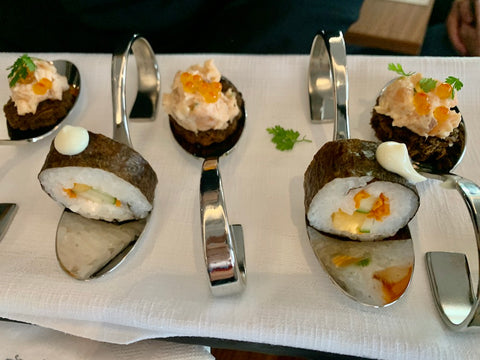
We sailed for two days to reach Singapore, one of Asia's most cosmopolitan cities., located at the southern tip of the Malay Peninsula, between the Straits of Malacca and the South China Sea. Debby and I savored a Viking cruise's many culinary delights, unique cocktails, and artistic food displays. We never missed the entertainment and also attended the excellent lectures on board.
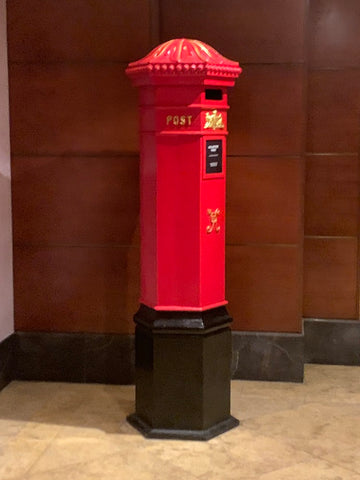
After docking, we boarded the motor coach for our tour, which started in Outram. In 1819, the British East India Company established a trading settlement on the island under the leadership of Stamford Raffles. 1963, Singapore gained its independence, briefly joining the Federation of Malaysia before breaking away to become an independent sovereign in 1965. Today, one can still see the British influence in the old residences.
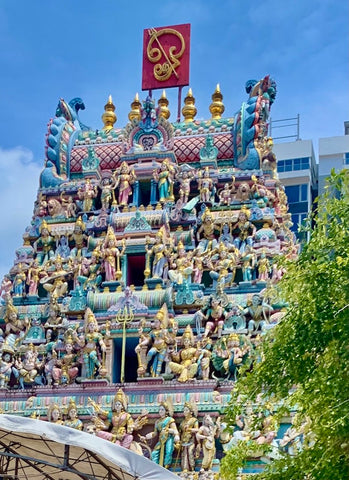
I did not know what to expect, so I was blown away by its mix of different cultures. The vibrant colors and sculptured figurines of the Hindu and Buddhist temples never failed to surprise me. I pondered how many artists worked on all those statues. And, of course, one could expect to see a Chinatown and rely on encountering a variety of restaurants and markets in those bustling streets. Communities like Little India developed their trading places and homes, incorporating their styles and decorations. We looked into the storefronts selling fresh flower garlands, gold jewelry, and colorful silks. Just by looking, I could smell the exotic spices. All these communities blend age-old traditions and modern living.
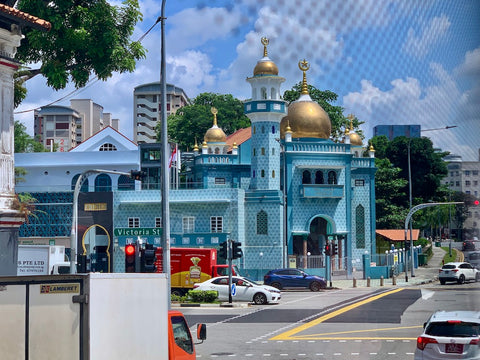
Driving through town, unexpected sights, such as the giant golden domes of the elegant Malabar Mosque, one of the country's most impressive religious buildings, suddenly appear. What an extraordinary, blue-tiled building on the corner of Victoria Street. Malays, Sumatrans, Indonesians, and Yemenis occupy the Arab Quarter, which has a Muslim influence and is where one can buy textiles and Persian carpets. I was particularly interested to come across Malays since there is a huge community in Cape Town, where I grew up.

We stopped for a stroll along the Singapore River and a view of the impressive Marina Bay Sands complex, a landmark of Singapore. The Sands Skypark, a 1,120-foot-long skyway on top of three towers, is its most striking feature. It includes a 490-foot infinity swimming pool and the world's largest cantilevered platform. The resort contains a vast casino, a 2,561-room hotel, a mall, a theatre, art-science exhibits, celebrity restaurants, and two floating crystal pavilions.
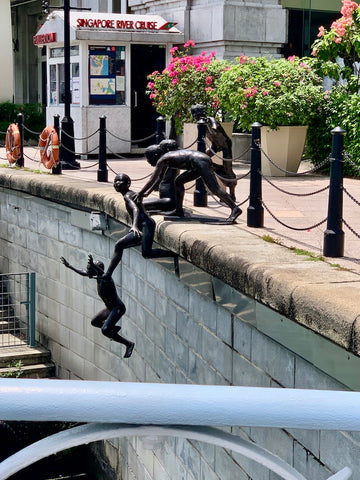
We walked along the banks of the Singapore River and admired a cute statue. We admired the traffic along the river and the rows of buildings on the opposite bank. It was nice to experience the open, green space where residents could unwind.

The Singapore Cable Car is a gondola lift gliding 330 feet above sea level, linking Mount Faber on Singapore Island to the resort island of Sentosa across the Keppel Harbour. In March 2024, to celebrate its fiftieth year in existence, the company introduced the world's first chrome-finished spherical cable car cabin with see-through glass floors.
My impression of Singapore is that it is a busy concrete jungle with modern high-rise buildings interspersed with lively pockets of different cultures that maintain age-old traditions.

